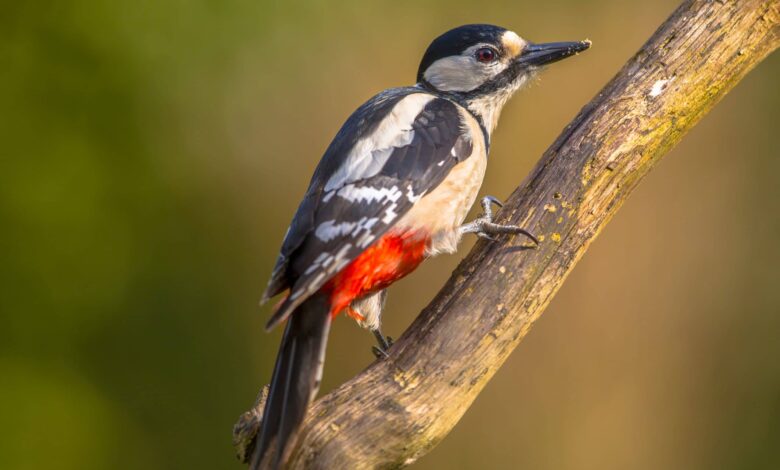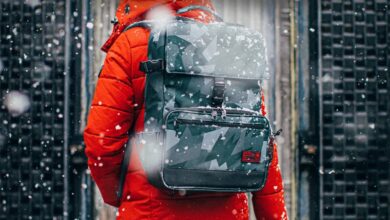How to find places to photograph wildlife near you

Are you having trouble finding places to photograph wildlife near you? Many wildlife photographers feel that there are not enough opportunities to take great wildlife photos near their homes. Having to travel far to a good location to photograph wildlife means you won’t be out shooting as often.
In this article, we’ll answer a common question: “how do I find wildlife photography locations near me?” We start by looking at different habitat types and then move on to some tips on how to narrow down your search.

Great locations to photograph Wildlife near you
Let us start with the most obvious places to find wildlife near your home.
National Park
If you have a national park as your neighbor, you probably won’t ask this question. However, many people are not lucky enough to live in such a place. But how far is it to the nearest national park? Is it really possible to return on a day trip, or perhaps with a single accommodation for the night? You will probably have more opportunities to meet wildlife in a natural park than in a normal forest because the animals are not restricted by hunting. However, they can also be a bit shy as they are not used to humans
Protected areas or natural habitats
Sanctuaries are often overlooked by beginner wildlife photographers. However, they are protected for a reason. They are often overrun with wildlife, and sanctuaries are more often scattered across a country than national parks. Natural habitats are often protected as some species are at risk of disappearing from the area. However, there will probably be many other animals.

Forest
If you have a forest nearby, you should be able to spot common wildlife like squirrels and woodpeckers there, and perhaps the occasional deer. Find an area not frequented by people, sit quietly, and watch. When everything is quiet, the animals will come. Moving around will probably scare them off before you see them. Waking up early will also greatly increase your chances.
Park and Botanical Garden
You can often find a variety of smaller wildlife near where you live, in parks and botanical gardens. Due to the number of people visiting, the wildlife that lives around is usually more used to humans and is not shy. This gives you a better chance of capturing them as you walk through the park.

Lake
Freshwater lakes are wildlife’s natural magnets because they have what every animal needs. Drinking water! And some species find their food in the water. Observe which animals are present and next when they are most active.
Urban wildlife
In the outer urban areas you can often find squirrels, raccoons, and other smaller animals. Again, you should probably set alarms to wake up early, as they are usually most active when people are still asleep.
Your own garden
Finally, unless you live in a large city, you can try attracting wildlife to your own garden, by allowing free access to the garden. I did it a year ago in my own garden with a few 12 x 12 cm holes under the fence in three or four places. This summer we had a hedgehog move in and in the fall it had 5 hedgehogs running around her. A water bath will also attract birds, flies, and dragonflies possibly for the first season or two.
Feeding the birds will attract local birds within a few days. So there are plenty of options for attracting wildlife to your own garden.
We have now looked at different locations where you can look for wildlife near your home. However, besides the garden, the area is still too wide to search, and to avoid relying on luck too much, there are a number of alternative approaches to narrow the search even further.
How to find out what wildlife lives near you
Apps and Websites
Nature lovers, like me, tend to congregate in online communities. Even though you are not actively involved, you can still learn a lot from birds, mammals or plant communities. They usually have some kind of location and species database where you can search for a particular animal and get an approximate location that someone in the community has spotted it. This helps you narrow down the location in your local area to track foxes, owls or herons, or whatever you’re hoping to take a great photo with. A location search will tell you what type of animal has been seen at this particular location.
If you live in a non-English speaking country, I recommend trying to find a species database in your own language. Although there are universal applications such as eBird, or iNaturalist, this is great, you will likely find that applications and databases in your own language will have more local reporting of species found than global databases.
Ask your friends, neighbors and other locals
Remember to let your friends know about your hobby of wildlife photography and ask them to let you know if they spot something that interests you.
Usually when I’m out taking a few photos in a nearby park or forest, a random passerby will stop and speak in a low voice. They often go out just to let me know that they just spotted a squirrel or some heron a few minutes ago in their path. Once, a stranger who wanted to chat for a bit told me about a location where she had previously met other photographers taking pictures of kingfishers. As a newbie to the area, this was a valuable tip for me.

Join a local Facebook group
Try searching for a local nature group or photography group on Facebook. Often the image quality in these types of groups isn’t too good, but images coming from all corners of your local area can give you a hint as to where to look for specific species.
Searching for Signs of Wildlife and Mapping
I tend to consider finding great places to photograph wildlife near home, as the first step in my research. Then you’ll also want to map out signs of animal presence, nests or nests, sitting positions, and where you might be hiding. With birds, you may also want to record the direction of the wind when the birds appear and in which direction they move or land. This allows you to better position yourself for the actual photo shoot.

Epilogue
It takes time to find great spots to photograph wildlife. Even after first spotting an area with wildlife, it can take weeks or months until you find the perfect spot to hide or where birds tend to land. Finding that place that they visit again and again increases your chances of success tenfold.
Hey, I’m Peter. I am the owner and editor of Photography-RAW. I guarantee that you will get the best articles on photography. Personally, I prefer landscape, nature and macro photography.
I hope you like the site





